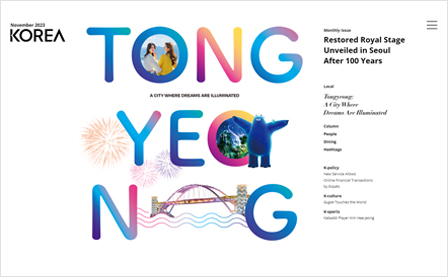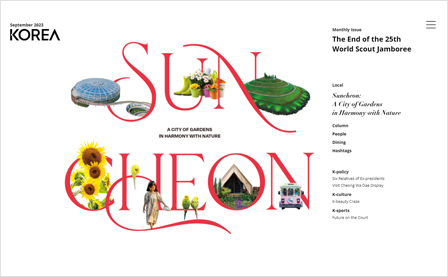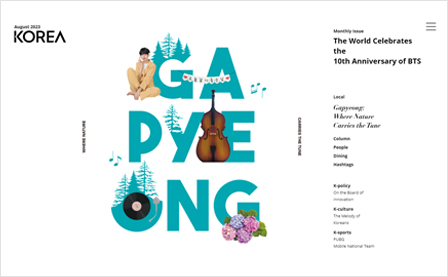December 2023

K-culture
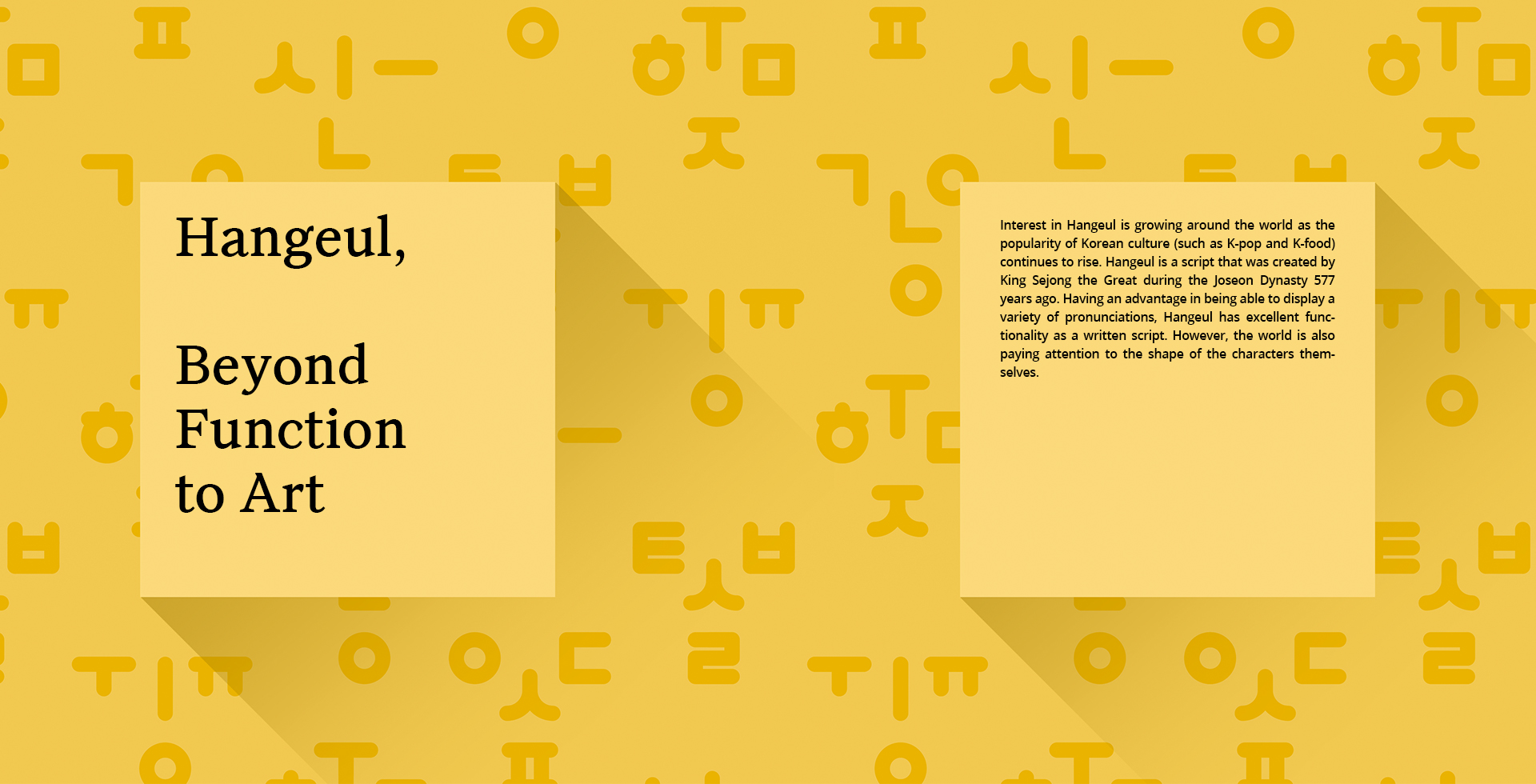

Photos courtesy by Korean Cultural Center in Osaka
Beautiful Practical Characters
Hangeul is scientific. In particular, the 14 consonants were modeled after the organs used for pronunciation: the mouth, teeth, throat and tongue. For example, the pronunciation of “ ㄱ,” which lies between the English letters “G” and “K,” is spoken with the tongue blocking the throat. “ㄴ,” a similar sound to the English letter “N,” is spoken with the tongue touching the upper gums. A harder sound can be expressed by adding a stroke to the character. For example, you can make a harder sound for “ㄱ” by adding a stroke to make it “ㅋ” (similar pronunciation to the English letter “K”). You can also add a stroke to “ㄷ” (similar pronunciation to the English letter “D”) to make it “ㅌ” (similar pronunciation to the English letter “T”). You can express various sounds from around the world with Hangeul if you know how to write the basic characters.
Hangeul is functional, but the shapes of the actual characters are also beautiful. Hangeul has incredible formative beauty. The consonants such as “ㅇ, ㅅ, ㅁ” form a circle, triangle and square while the vowels such as “ㅏ, ㅓ, ㅗ, ㅜ” are geometric and form straight lines. That’s why the font is so clear and concise. New characters are created by combining the initial, middle and final consonants. The attraction of Hangeul is that completely different shapes come together to form the consonants. Designers such as CHANEL and Raf Simons have recognized the charm of Hangeul and incorporated the characters into their works.
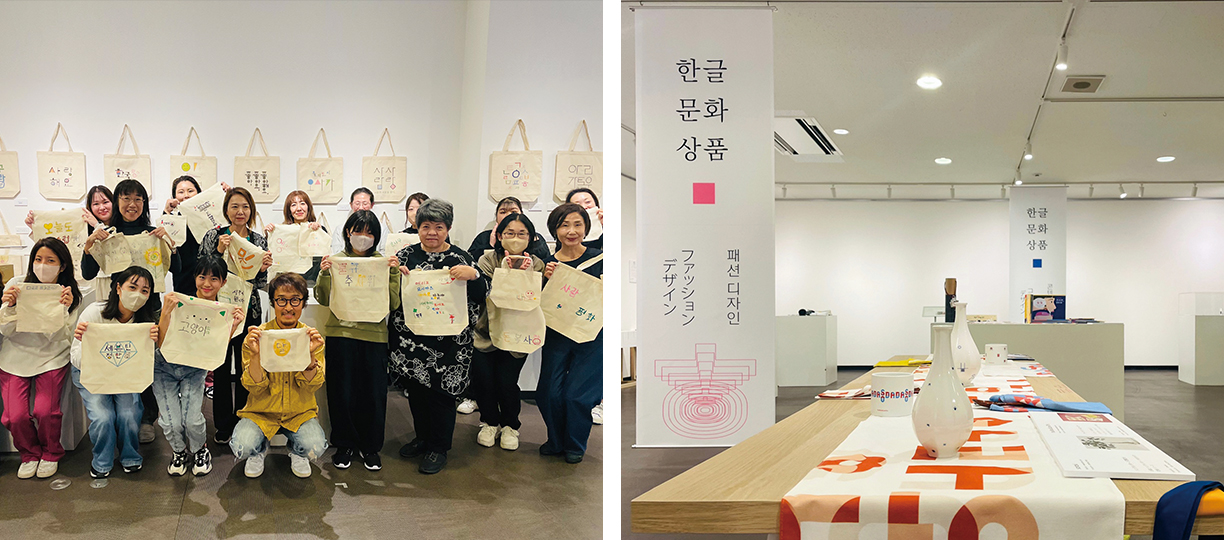 (Left) At the Hangeul Design Workshop, participants designed eco-friendly bags using Hangeul.
(Left) At the Hangeul Design Workshop, participants designed eco-friendly bags using Hangeul. (Right) The Hangeul Design Cultural Products Special Exhibition
Playing with Hangeul
The Korean Cultural Center in Osaka has held numerous events where people have had the opportunity to learn and experience Hangeul. A representative example is the Korean writing competition “Korean Writing Mokkoji” that was held last July. (“Mokkoji” means “a gathering.”) The competition included various categories where people could showcase their Korean writing skills such as essays, poetry and book reviews, but there was also a category for handwritten Hangeul. The handwritten Hangeul category involved transcribing pieces from various genres such as song lyrics, poetry and novels.
The participant who won the grand prize in the hand-written Hangeul category said, “I transcribed a passage from a book that I saw in a historical Korean drama and entered it in the competition. I’m happy to receive this award. It has given me even more motivation to learn Korean.” The Korean Cultural Center in Osaka displayed the award-winning works from the competitions from this year and last year in the gallery as well as online to give even more people the chance to appreciate the beauty of the Korean pieces.
The Korean Cultural Center in Osaka also offered people the chance to learn more about the beautiful design of Hangeul. The “Hangeul Design Workshop” held on Oct. 14 was hosted by An Kiyoung, a professor in the Department of Arts, Faculty of Arts and Letters at Kindai University. An Kiyoung introduced Hangeul in the “Introduction to Hangeul Art Design” section of the workshop. An also talked about the latest design trends such as the design elements found in the creation of Hangeul and sustainable designs combined with Hangeul. The workshop also gave people the chance to add Hangeul patterns to eco-friendly bags. Participants fell in love with the charm of Hangeul by writing their favorite words or names of idols on the bags.
Experience Everything Hangeul Has to Offer
The Korean Cultural Center in Osaka also offered people the chance to simultaneously enjoy the works from the Hangeul-related experience programs. The “Hangeul Design Cultural Products Special Exhibition” held from Sept. 25 to Oct. 21 showcased the history of Hangeul as well as the works created by those who participated in the event held by the Korean Cultural Center in Osaka. Items such as the works of the winners of the 2022 and 2023 Hangeul Writing Mokkoji, eco-friendly bags, tumblers and decorative masking tape were also displayed.
The exhibition also showcased various Hangeul-related products. The products included lifestyle items, fashion, books about the creation of Hangeul and octagonal vases engraved with Hangeul patterns. There were also toys such as Hangeul blocks and roly-poly toys that formed the shape of Hangeul characters when spun. Useful miscellaneous items such as necklaces, key rings and diffusers also attracted the attention of those who visited the exhibition.
Unlike other scripts, Hangeul is not widely used outside of Korea, so it may be difficult for people around the world to learn. However, Hangeul’s incredible attractiveness and beauty make it worth being known worldwide. People in Japan have been able to experience Hangeul through a new perspective thanks to the efforts of the Korean Cultural Center in Osaka. The center will continue to help people learn more about Hangeul to help bring them one step closer to Korea.
 (Left) The award-winning piece in the handwritten Hangeul category of Korean Writing Mokkoji, by Ms. Midori Hayakawa
(Left) The award-winning piece in the handwritten Hangeul category of Korean Writing Mokkoji, by Ms. Midori Hayakawa(Right) The Korean Writing Mokkoji Online Awards Ceremony
 View of all
View of all